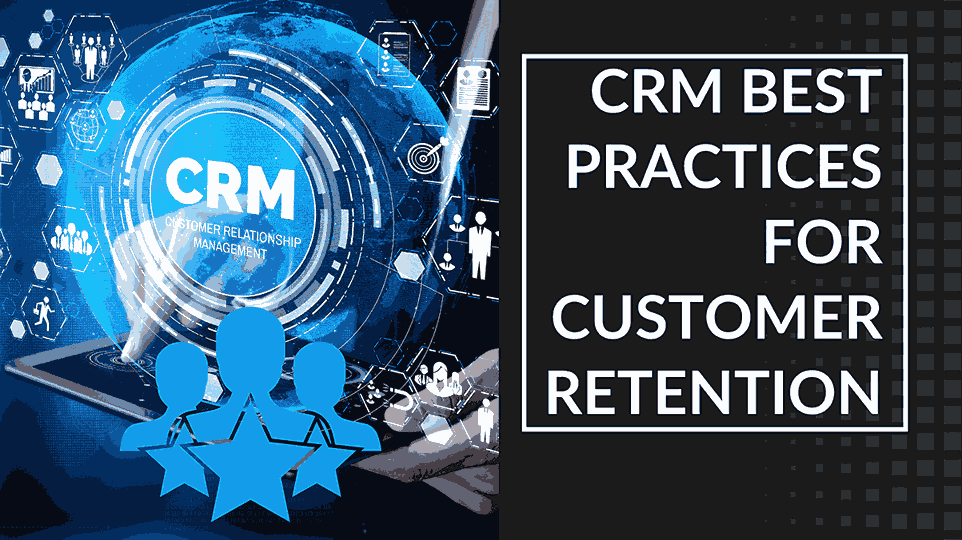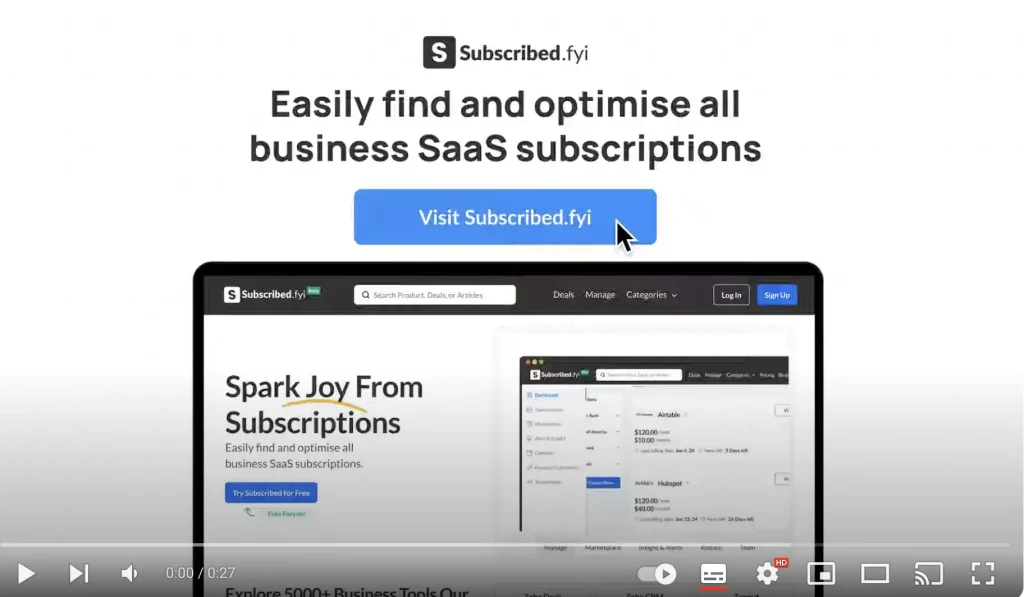CRM best practices for customer retention
- Customer Relationship Management

CRM Best Practices for Customer Retention
ARTICLE | 13 MIN READ
Businesses work hard to attract customers through a mix of marketing, social media, and sales strategies. You’ve invested a lot of time and effort (and probably money) in gaining your customers’ trust. It only makes sense to also invest in customer retention.
To improve customer retention, look at your entire customer experience, or everything customers think and feel when they encounter your brand. Customer-facing interactions, such as support ticket resolution or how a brand communicates its values, are a few factors that affect a buyer’s relationship with a brand.
Keep more, hard-earned customers by creating a seamless experience that makes them happy every step of the way. If your business falls short of customer expectations, you risk losing those customers before you even have a chance to make things right. Luckily, with the metrics, tools, and strategies shared in this article, you’ll have everything you need to keep your customers coming back.
What is Customer Retention?
Customer retention definition: a company’s ability to turn customers into repeat buyers and prevent them from switching to a competitor.
Customer retention indicates whether your product and the quality of your service please your existing customers. It’s also the lifeblood of most subscription-based companies and service providers.
In an ideal world, a 100 percent retention rate is the goal. Realistically, though, a “good” percentage varies by industry. Generally, the benchmark for small businesses hovers around 20 percent. Meanwhile, the rate for ecommerce businesses should be more than 35 percent.
Here’s a breakdown of average retention rates for various industries according to the latest study:
| Industry | Retention Rates (%) |
|---|---|
| Media | 84% |
| Professional services | 83% |
| Automotive and transportation | 83% |
| Insurance | 83% |
| IT | 81% |
| Construction | 80% |
| Finance | 78% |
| Telecommunications | 78% |
| Healthcare | 77% |
| Software | 77% |
| Banking | 75% |
Why is Customer Retention Important for Businesses?
It doesn’t always make sense to spend the big bucks on marketing, advertising, or sales outreach since long-term success usually occurs when businesses prioritize their relationships with existing customers.
It’s easier to turn past customers into repeat buyers and keep profits high since they already trust your brand and may have even formed relationships with your sales and support staff. Plus, a positive experience makes it more likely that customers will advocate for your brand (free buzz) in their community.
A few other reasons why customer service retention is so important for business success are:
1. Cost Savings
Acquiring new customers can be up to five times more expensive than retaining existing ones. By keeping your current customers engaged and satisfied, you’re saving significant acquisition costs.
2. Better Bottom Line
Repeat customers tend to spend more than new customers. They are also more likely to purchase higher-value products or services. This positively impacts your business’s bottom line.
3. More Customer Loyalty
Loyal customers are not just repeat buyers; they are advocates for your brand. They are more likely to recommend your products or services to others, helping you expand your customer base.
Key Customer Retention Metrics to Measure
Measuring customer retention requires tracking certain key metrics. Understanding these metrics helps you identify areas for improvement and create data-driven strategies. Here are some essential customer retention metrics:
1. Customer Churn Rate
This metric tells you how many customers you’ve lost in a specific period. To calculate it, divide the number of customers lost by the total number of customers at the start of the period.
2. Customer Retention Rate
The customer retention rate is the inverse of the churn rate. It shows you the percentage of customers you’ve retained. Subtract the churn rate from 100% to get the retention rate.
3. Customer Lifetime Value (CLV)
CLV estimates the total revenue a business can expect from a customer throughout their entire relationship. It’s an important metric for assessing the long-term value of your customers.
4. Net Promoter Score (NPS)
NPS measures customer satisfaction and loyalty by asking customers how likely they are to recommend your product or service to others. It’s a valuable indicator of your brand’s reputation.
5. Customer Satisfaction Score (CSAT)
CSAT surveys measure customer satisfaction with your products or services. It provides a quick assessment of customer happiness.
6. Repeat Purchase Rate
This metric calculates how many customers make multiple purchases. It reflects how engaged and loyal your customers are.
8 Strategies to Retain Customers
Customer retention is an ongoing effort that involves various strategies. Here are eight effective ways to keep your customers coming back:
1. Exceptional Customer Service
Offer top-notch customer support to address issues and answer questions promptly. Make your customers feel valued.
2. Personalization
Tailor your communications and offerings to each customer’s preferences and behaviors. Personalized experiences build stronger connections.
3. Loyalty Programs
Create loyalty programs that reward customers for their repeat business. Loyalty points, discounts, or exclusive offers can keep customers engaged.
4. Regular Communication
Stay in touch with your customers through email marketing, newsletters, and social media. Provide valuable content and updates.
5. Feedback Collection
Ask for customer feedback and use it to improve your products or services. Show customers that their opinions matter.
6. Surprise and Delight
Occasionally surprise your customers with unexpected perks, such as freebies, exclusive content, or personalized thank-you notes.
7. Community Building
Foster a sense of community among your customers. Encourage them to engage with your brand and with each other.
8. Continuous Improvement
Regularly assess your customer retention strategies and adapt them to changing customer expectations and market trends.
7 Customer Retention Examples and Why They Work
Learning from successful customer retention examples can inspire your own strategies. Here are seven real-world examples and why they work:
- Amazon Prime
- Why It Works: Amazon Prime offers customers exclusive benefits like fast shipping, streaming services, and discounts, encouraging them to subscribe for long-term convenience.
- Starbucks Rewards
- Why It Works: Starbucks Rewards offers free drinks and food after accumulating points, turning casual coffee buyers into loyal customers.
- Apple
- Why It Works: Apple excels in creating a loyal customer base through its high-quality products, user-friendly interface, and seamless ecosystem.
- Airbnb
- Why It Works: Airbnb builds trust through its host and guest reviews, enhancing the customer experience and fostering loyalty.
- Spotify
- Why It Works: Spotify offers a free tier, letting users try before they subscribe, while the premium tier provides an ad-free and enhanced listening experience.
- Coca-Cola
- Why It Works: Coca-Cola’s Share a Coke campaign personalized bottles with customer names, creating a strong emotional connection with the brand.
- Zappos
- Why It Works: Zappos offers an exceptional return policy and top-tier customer service, ensuring a positive shopping experience and repeat business.
What is a Customer Retention Program?
A customer retention program is a strategic initiative to keep your existing customers engaged and loyal. It involves various activities and tactics aimed at building long-term relationships with customers, encouraging repeat purchases, and turning customers into brand advocates.
These programs often include the use of customer retention software and analytics to track and measure customer behavior and satisfaction. By understanding customer preferences and needs, businesses can tailor their approaches to keep customers satisfied and coming back for more.
Conclusion
Customer retention is a vital aspect of any successful business. By implementing effective strategies, measuring key metrics, and learning from successful examples, you can keep your customers satisfied and loyal. Prioritizing customer retention not only improves your bottom line but also builds a strong and positive brand reputation.
Remember, it’s often more cost-effective to nurture existing customers than to constantly chase new ones. By focusing on keeping your customers happy, you’ll create a solid foundation for long-term business success.
So, are you ready to invest in customer retention and watch your business thrive?
Stay tuned for more insights on customer retention and business success.






